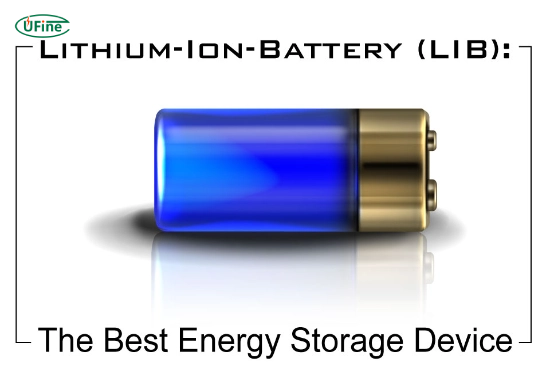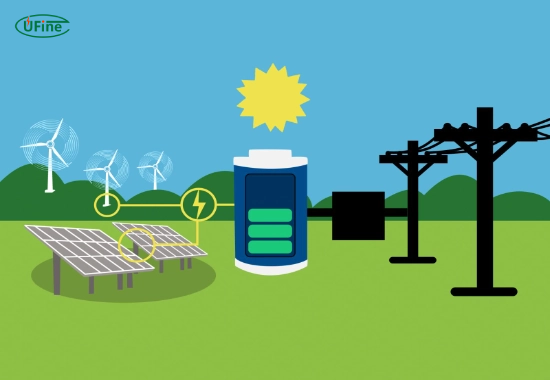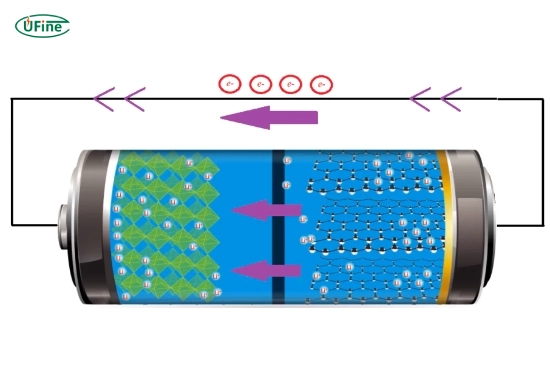In recent years, the world has witnessed a significant shift toward renewable energy solutions. With the growing need to combat climate change and reduce dependency on fossil fuels, technologies like solar and wind power have become mainstream. However, the major challenge with renewable energy is its intermittent nature. Energy storage systems are essential to bridging the gap between energy generation and energy demand. This is where lithium energy batteries come into play.
Lithium-ion batteries have revolutionized the renewable energy market by providing efficient, reliable, and scalable storage solutions. Their versatility and high performance make them a cornerstone of the global energy transition. In this article, we’ll explore the role of lithium-ion batteries, their benefits, applications, and how they are reshaping the renewable energy market.
Part 1. What is a lithium energy battery?
A lithium energy battery is a type of rechargeable battery that uses lithium ions to store and release energy. Lithium ions move from the positive electrode (cathode) to the negative electrode (anode) when charging. During discharge, the ions flow back to the cathode, generating electricity.
These batteries are widely used due to their high energy density, long cycle life, and lightweight design. Compared to traditional lead-acid or nickel-cadmium batteries, lithium energy batteries are far more efficient and durable, making them the preferred choice for renewable energy storage systems.
Part 2. Why are lithium energy batteries critical for renewable energy?
Lithium batteries are critical for renewable energy because they address the inherent challenges of renewable power sources. Solar and wind energy, for instance, are dependent on weather conditions and cannot consistently produce electricity. Lithium batteries allow excess energy generated during peak production times to be stored and used when demand is high or when generation is low.
In summary, Lithium-Ion batteries enable the storage and utilization of renewable energy, ensuring a steady and reliable power supply.
Part 3. Key benefits of lithium energy batteries
The adoption of lithium energy batteries in renewable energy systems offers several advantages:
- High energy density: Lithium batteries can store more energy in a smaller space compared to other types of batteries.
- Long lifespan: They can last thousands of charge-discharge cycles, making them ideal for long-term use.
- Fast charging: Lithium batteries charge faster than traditional batteries, reducing downtime.
- Lightweight: Their lightweight design makes them suitable for various applications, from home storage systems to electric vehicles.
- Low maintenance: Lithium energy batteries require minimal maintenance compared to other energy storage solutions.
Part 4. Applications of lithium energy batteries in renewable energy
Lithium energy batteries have found their way into numerous renewable energy applications, including:
- Residential energy storage: Homeowners with solar panels can store excess energy in lithium batteries for later use, reducing reliance on the grid and lowering electricity bills.
- Utility-scale energy storage: Large-scale lithium battery systems stabilize power grids, store renewable energy, and provide backup power during outages.
- Electric vehicles (EVs): Electric vehicles powered by lithium batteries are an eco-friendly alternative to traditional fossil fuel vehicles, contributing to reduced emissions.
- Off-grid systems: Remote areas without access to the main power grid can utilize lithium energy batteries to store solar or wind energy for reliable electricity.
- Integration with smart grids: Lithium energy batteries enable advanced energy management systems by integrating with smart grids to optimize energy distribution and efficiency.
Part 5. How do lithium energy batteries work?
Lithium energy batteries operate on the principle of lithium-ion movement. Here’s how they work:
- Charging phase: Lithium ions move from the cathode to the anode through an electrolyte, where they are stored.
- Discharging phase: When the battery is in use, the ions flow back to the cathode, generating an electric current.
- Recycling process: This process repeats for thousands of cycles, making lithium batteries highly durable.
This simple yet efficient mechanism is what makes lithium batteries a reliable energy storage solution.
Part 6. What makes lithium energy batteries better than other batteries?
Lithium energy batteries outperform other types of batteries, such as lead-acid and nickel-cadmium, in several ways:
- Efficiency: Lithium batteries have an efficiency rate of over 90%, meaning less energy is lost during charging and discharging.
- Energy density: They can store significantly more energy per unit weight.
- Environmental impact: Unlike lead-acid batteries, lithium batteries are less toxic and easier to recycle.
- Scalability: Lithium batteries can be scaled to meet the energy needs of small homes or large industrial setups.
Part 7. Challenges facing lithium energy batteries
While lithium energy batteries are transforming the renewable energy market, they are not without challenges:
- Cost: Lithium batteries are more expensive than traditional batteries due to the cost of raw materials and manufacturing.
- Resource scarcity: The extraction of lithium and other materials like cobalt can have environmental and geopolitical implications.
- Recycling: Although less toxic, lithium battery recycling infrastructure is still underdeveloped.
- Thermal runaway: Overheating can lead to safety hazards, though modern designs include safeguards to prevent this.
Despite these challenges, continuous innovation is making lithium energy batteries more sustainable and accessible.
Part 8. Innovations in lithium energy battery technology
The future of lithium energy batteries looks promising, thanks to ongoing research and development. Some notable innovations include:
- Solid-state batteries: These batteries replace the liquid electrolyte with a solid one, improving safety and energy density.
- Recyclable materials: Researchers are developing ways to recycle lithium batteries more efficiently to reduce waste.
- Lower-cost alternatives: New chemistries, such as lithium-iron-phosphate (LFP), offer lower costs and longer lifespans.
- Faster charging: Advanced designs are reducing charging times, making lithium batteries even more convenient.
Part 9. Environmental impact of lithium energy batteries
Lithium energy batteries have mixed ecological implications. On one hand, they enable the adoption of clean energy, reducing greenhouse gas emissions. On the other hand, lithium mining and battery disposal can harm ecosystems and communities.
To mitigate these effects, companies are adopting sustainable practices, such as:
- Sourcing lithium responsibly.
- Investing in recycling technologies.
- Developing alternative battery chemistries that require fewer rare materials.
Artikel Terkait: Differences Between Power Battery and Energy Battery
Part 10. FAQs
-
What is the lifespan of a lithium energy battery?
Lithium energy batteries typically last between 5 to 15 years, depending on usage and maintenance. They can endure thousands of charge-discharge cycles. -
Are lithium energy batteries safe?
Yes, lithium batteries are generally safe when used properly. Modern batteries include safety features to prevent overheating and overcharging. -
How much do lithium energy batteries cost?
The cost varies depending on size and application. Residential systems can cost between $5,000 and $20,000, while utility-scale setups can be much higher. -
Can lithium energy batteries be recycled?
Yes, lithium batteries can be recycled, but the recycling process is still being optimized to make it more efficient and cost-effective. -
What are the alternatives to lithium energy batteries?
Alternatives include flow batteries, solid-state batteries, and hydrogen fuel cells. However, lithium batteries remain the most widely used solution due to their versatility and performance.
Related Tags:
More Articles

Understanding the 11.1V Lipo Battery: Features, Benefits, and Common Applications
The 11.1V LiPo battery powers RC models, drones, and more. This guide covers its features, benefits, and common applications.
Lithium Ion Jump Starter vs. Lead Acid: What’s the Real Difference?
A lithium-ion jump starter offers a fast, reliable way to start a dead car battery. Here's how it compares to traditional lead-acid models.
How to Safely Clean Leads from a Leaking Battery: Step-by-Step Guide
This step-by-step guide covers risks, safety tips, and proper cleaning methods for safely cleaning leads from a leaking battery.
Portable Battery Charger vs. Power Bank: What’s the Difference?
A portable battery charger includes any portable charging device, while a power bank stores energy in a battery to charge devices without a power source.
The Ultimate Guide to Using a Lithium-Ion Jump Starter
A lithium-ion jump starter is essential for car emergencies. This guide covers its use, safety, maintenance, and why it's a smart investment.






